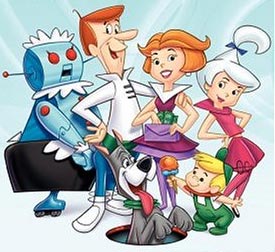February 2nd, 2009. George has started a new gig; volunteering for the National Philharmonic which is the orchestra-in-residence at the Music Center at Strathmore. I've been thinking, with the kids in college, now was a good time to devote time to philanthropic activities--especially given the financial crisis that is gripping the country. I eventually hope to balance contribution to the arts with equal contribution to helping the disadvantaged. I have yet to identify a charity in the latter category--but I'm looking. I don't want to enter into anything that would be too depressing, or would require a huge time commitment--maybe I'm being too picky. Anyway, last Saturday was my first day at the Strathmore. My volunteer efforts entailed setting-up and breaking-down chairs for a lecture they held before the concert--given by the back-up conductor. The lectures provide concert-goers with a better understanding of the music they're to hear that evening. However, on this night the chairs were already set-up and didn't need to be put away following the lecture, so I didn't feel particularly useful.
Regardless, the NP has an arrangement with Strathmore that volunteers receive a complimentary ticket for the evening show. Luckily, I received two complimentary tickets so that Jane and I could attend the concert. Among the selections was Mozart's last work, symphony no. 41 composed in 1788, and familiarly known as the Jupiter Symphony. I found the work mildly entertaining but agreed with Jane that similar segments sounded rather repetitive. But, neither of us are professional musicologists. I found the following description, which appeared on All Things Considered helpful in appreciating the symphony. Also I remember the movie Amadeus---which I really enjoyed--so in retrospect I liked (or should have liked) Jupiter more than I did.
Wolfgang Amadeus Mozart's last symphony, the Jupiter Symphony (No. 41), was written along with two other, full-length symphonies in the summer of 1788 — in just six weeks. Mozart had recently been idolized all over Europe for operas such as Don Giovanni and for his spectacular performances of his own piano concertos.
But, by most accounts, Mozart was near the bottom when he wrote it: broke and in debt. His audiences had become interested in other composers. Austria was at war with Turkey. And his newborn daughter had just died.
Still, Mozart was determined to do something revolutionary. That comes in the final movement of the Jupiter Symphony with the composer's use of counterpoint, or weaving together two or more different melodies. Mozart uses five different melodies simultaneously in the Jupiter, making it a challenge for any orchestra that takes it on.
Some have said the Jupiter sums up what had happened in symphonic music up to that point, and that it foreshadows the work of Beethoven. But more than that, it's exuberant and introspective, charming and complicated — a lot like life itself.

But, by most accounts, Mozart was near the bottom when he wrote it: broke and in debt. His audiences had become interested in other composers. Austria was at war with Turkey. And his newborn daughter had just died.
Still, Mozart was determined to do something revolutionary. That comes in the final movement of the Jupiter Symphony with the composer's use of counterpoint, or weaving together two or more different melodies. Mozart uses five different melodies simultaneously in the Jupiter, making it a challenge for any orchestra that takes it on.
Some have said the Jupiter sums up what had happened in symphonic music up to that point, and that it foreshadows the work of Beethoven. But more than that, it's exuberant and introspective, charming and complicated — a lot like life itself.

No comments:
Post a Comment